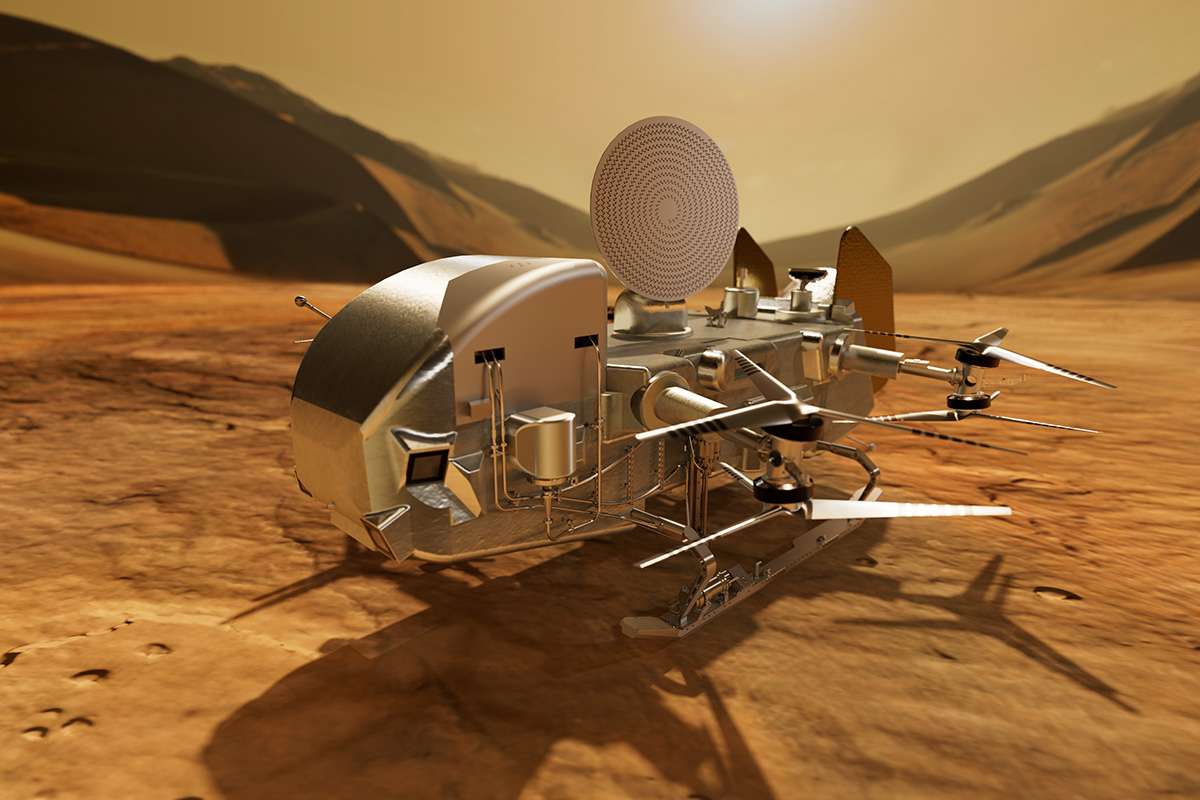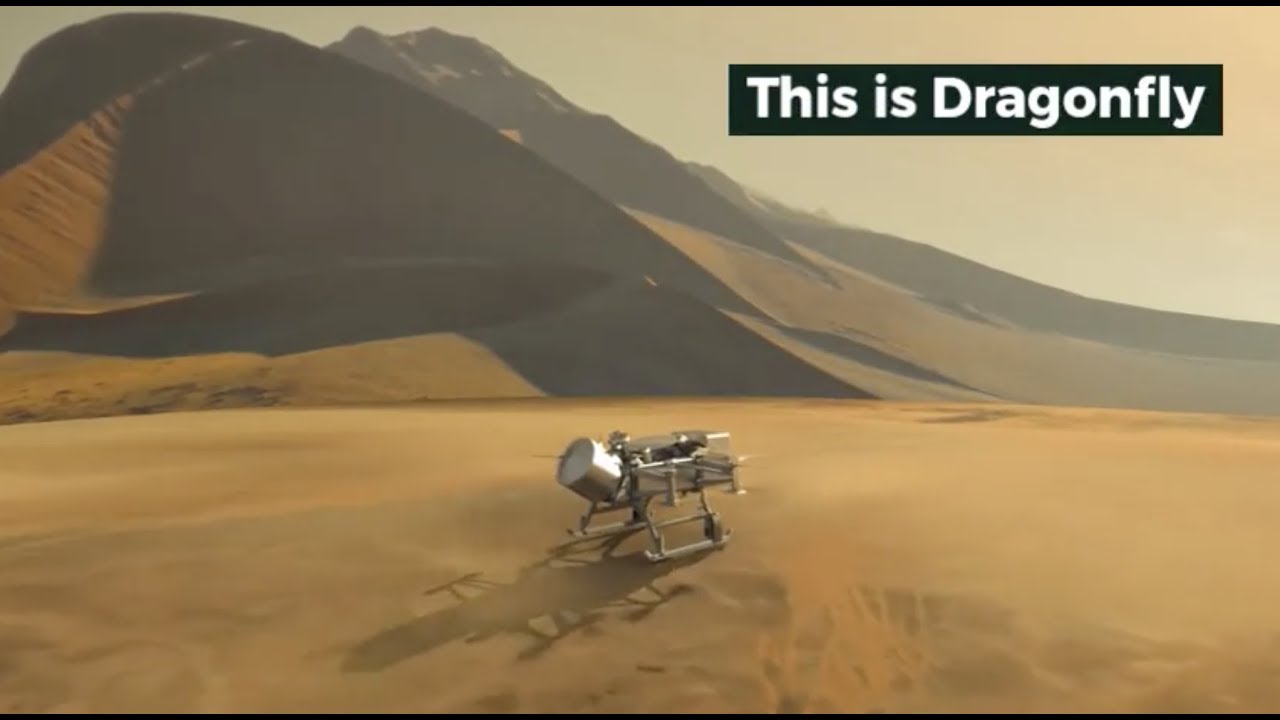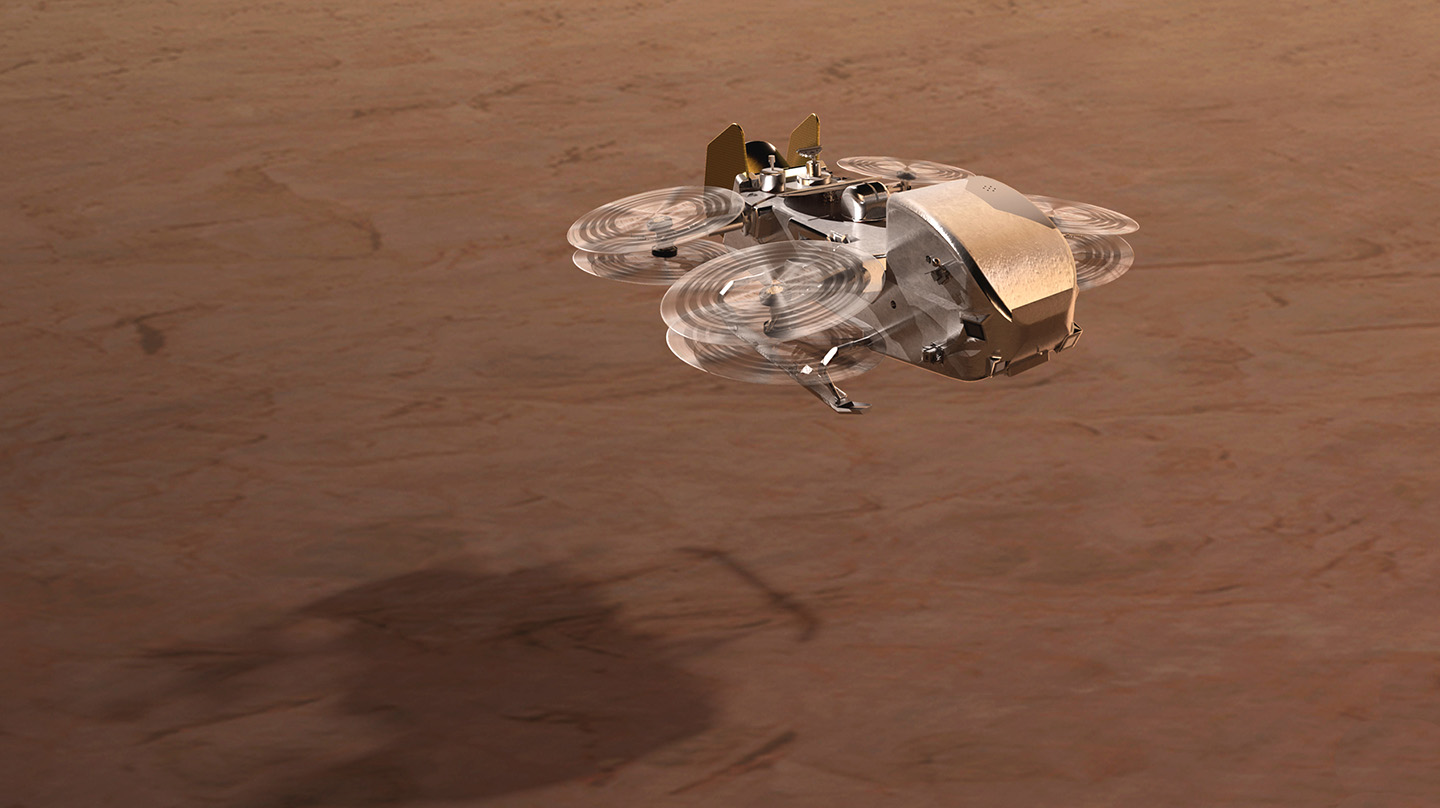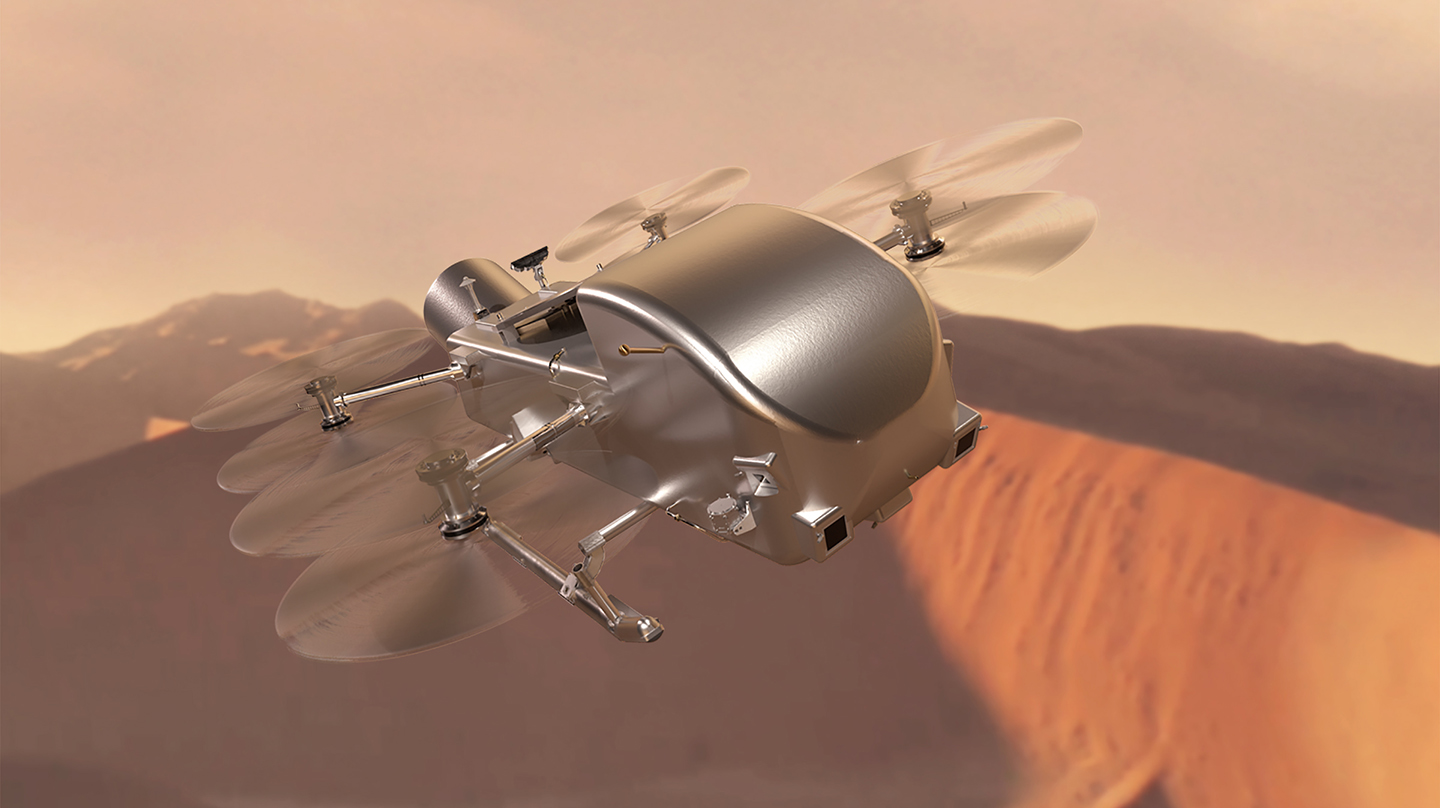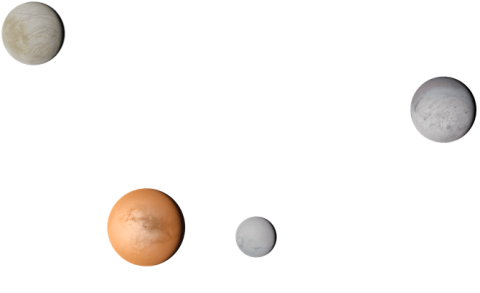Our Contribution
Exploring Saturn’s Moon Titan
Building off the discoveries of the NASA-ESA Cassini-Huygens mission, Dragonfly is a NASA mission that will explore Saturn’s largest moon, Titan. Led by Principal Investigator Elizabeth Turtle of APL, this revolutionary rotorcraft-lander expedition will study the atmosphere, carbon-based chemistry and geology of this cold yet Earthlike moon and ultimately advance our understanding of life’s chemical origins.
